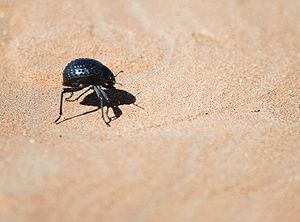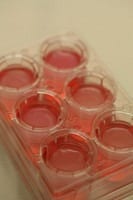A simple and inexpensive way to produce drinking water
IN THE dry desert on the west coast of Namibia, where the annual average rainfall is a meagre 40mm, the Namib beetle (Stenocara gracilipes) has evolved a unique mechanism to drink. It collects moisture from the early-morning fog that is produced when ocean breezes from the Atlantic collide with the hot desert air. Drawing inspiration from the beetle’s fog-harvesting trick, Shreerang Chhatre, a graduate student at the Massachusetts Institute of Technology, and his colleagues have developed a simple and inexpensive way to produce drinking water.
The Namibia mist rapidly dissipates once the sun rises, so the beetle has just a brief opportunity to collect water. The insect typically finds a ridge of sand and faces the breeze, angling its lower body upwards with its specially adapted wings outstretched. The wings have bumps made of a hydrophilic substance that attracts minute water droplets. As they accumulate, the droplets grow larger until their weight causes them to run off into troughs in the beetle’s wings. These troughs are covered with a waxy water-repelling substance which has the effect of rolling the droplets down the beetle’s inclined body towards its mouth. The insect then promptly drinks them.
Fog harvesting is not a new idea. FogQuest, a Canadian charity, has been installing devices using a plastic mesh to catch water droplets in developing countries for more than a decade. Mr Chhatre says what he and his colleagues have done is to increase the efficiency of water collection by using a variety of surface coatings.
Related articles
- Aussie Airdrop Harvests Water From Air, Wins Prize (popsci.com.au)
- Desert beetle inspires Dyson Award winner (techradar.com)










